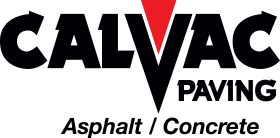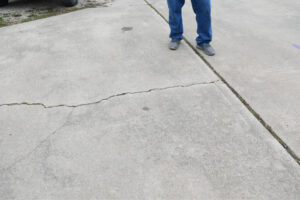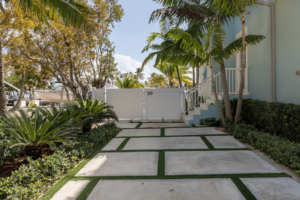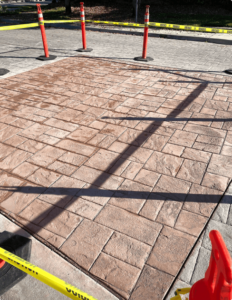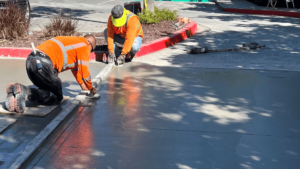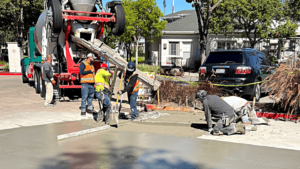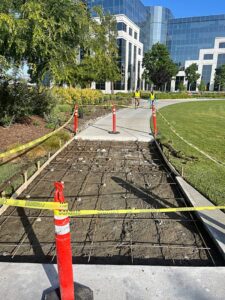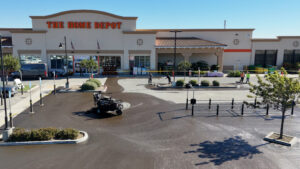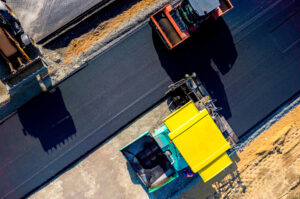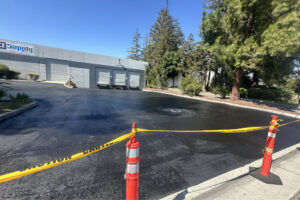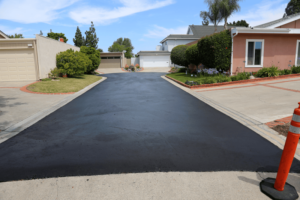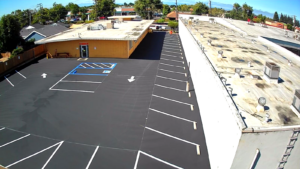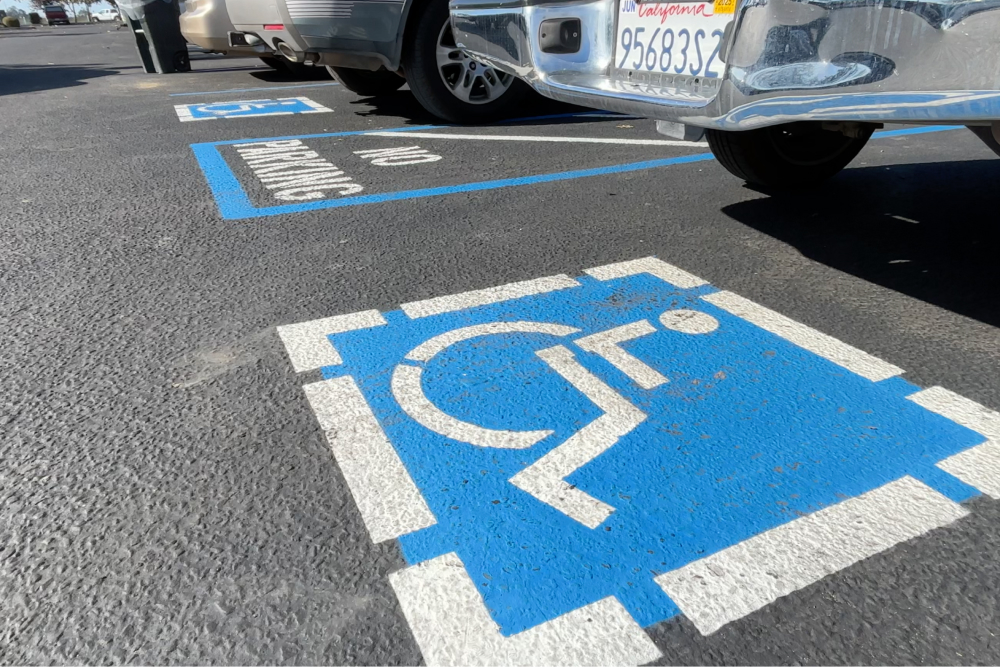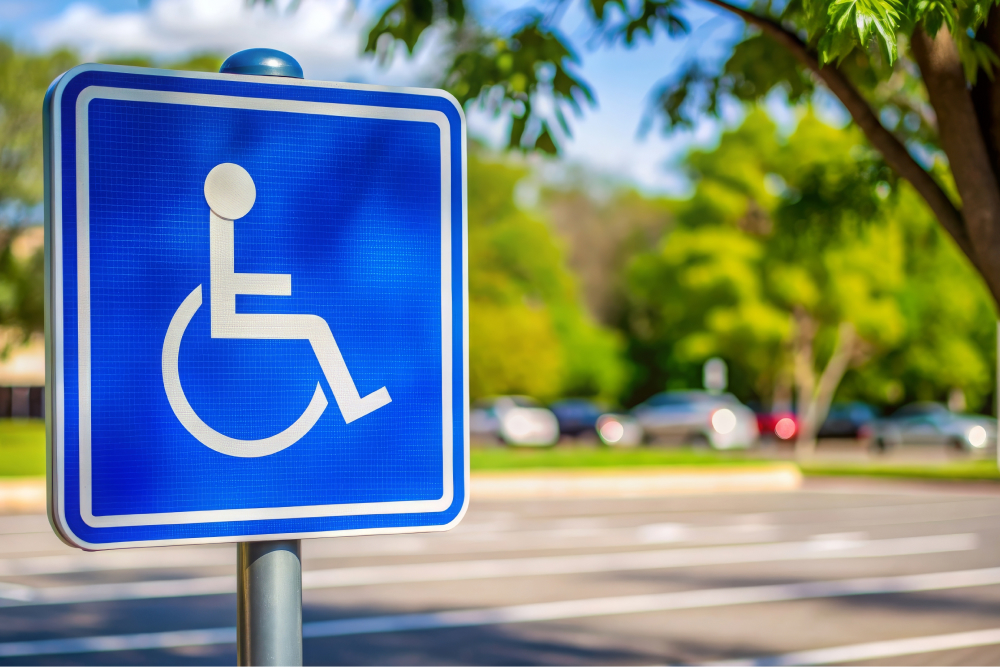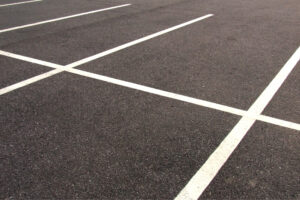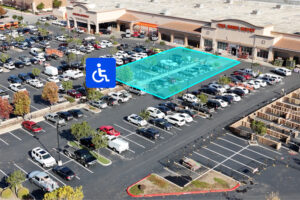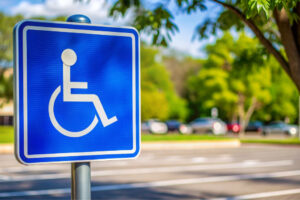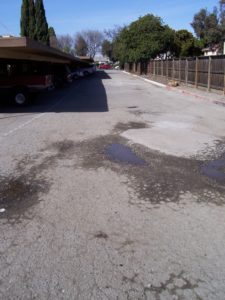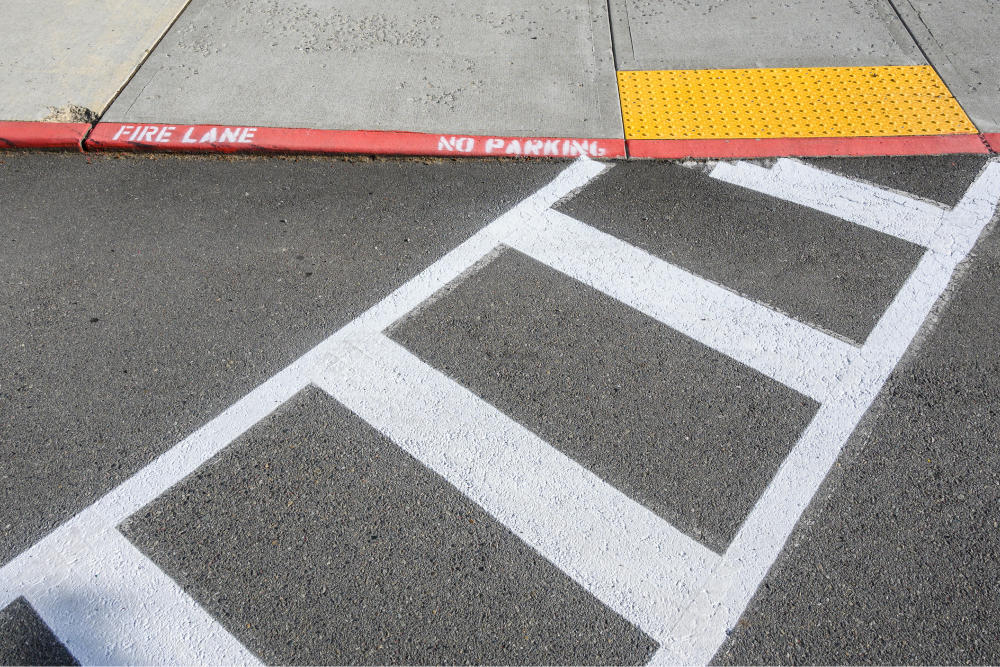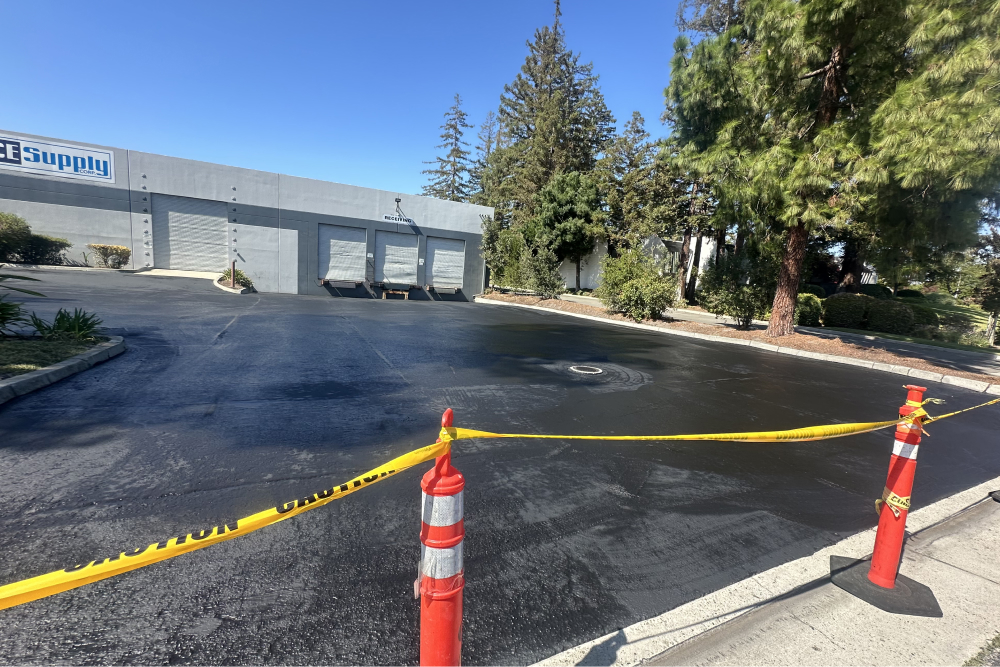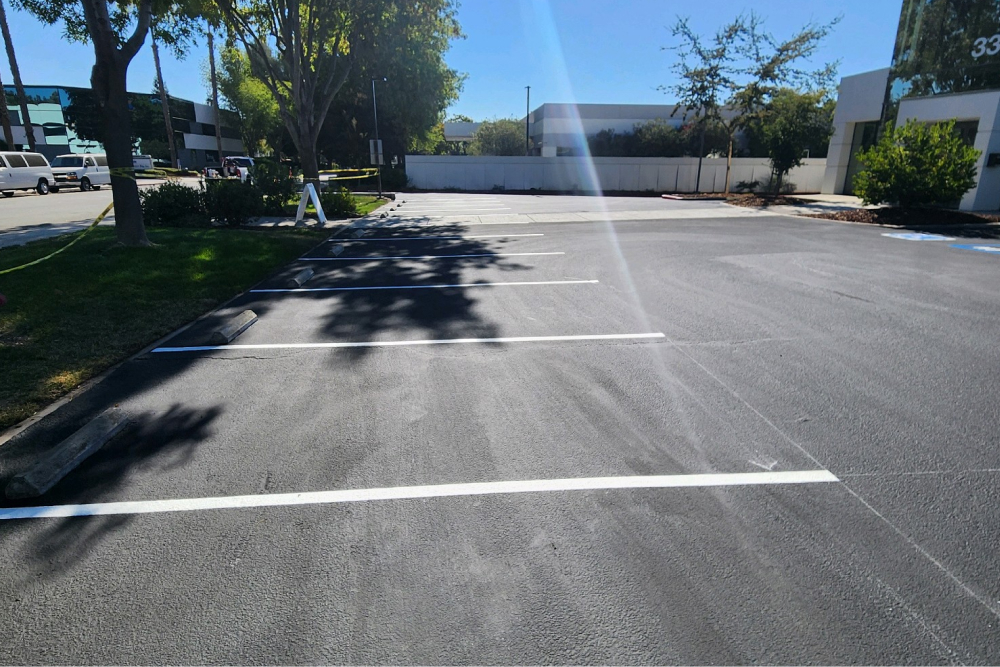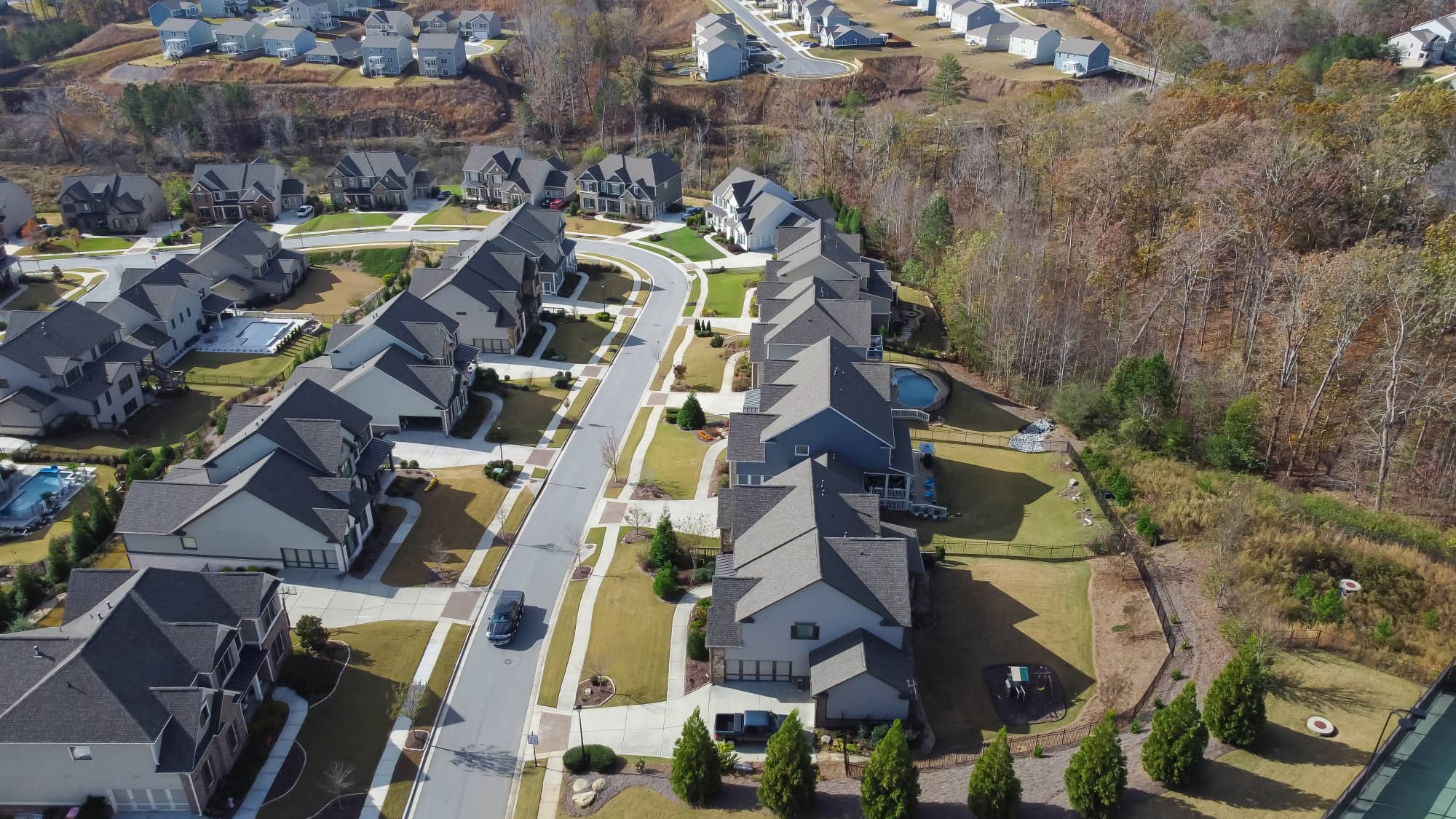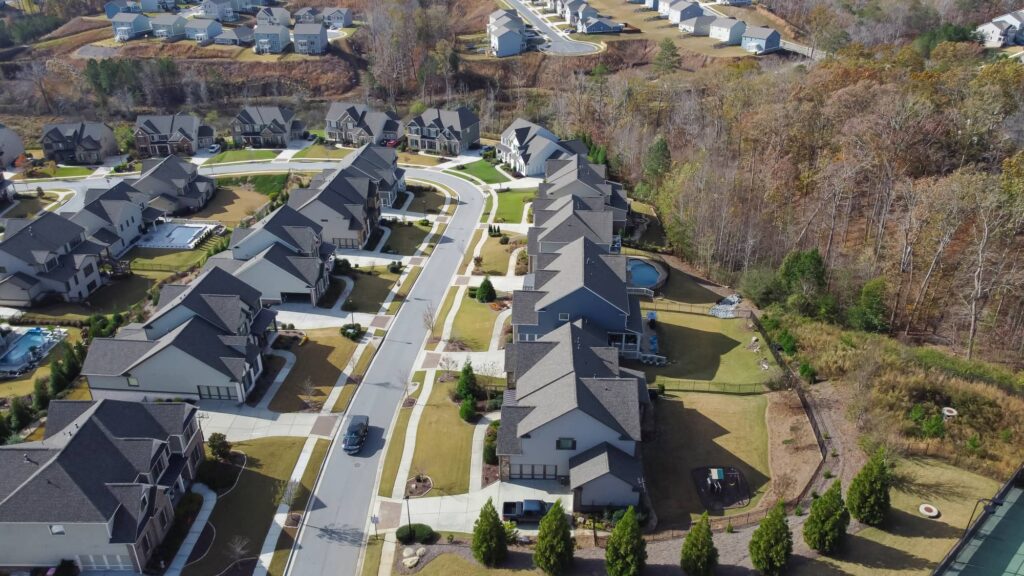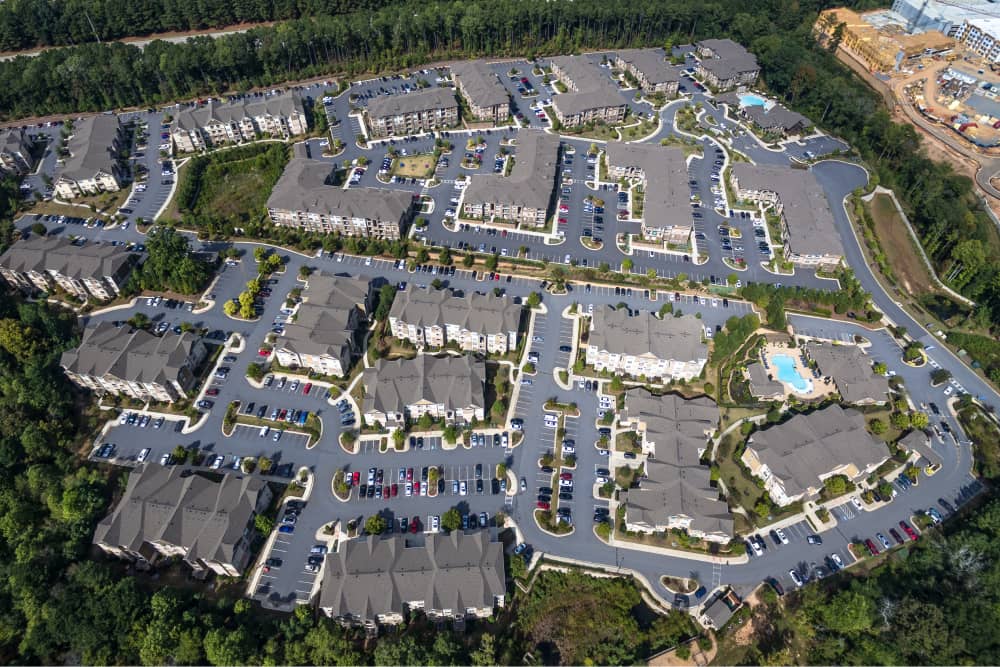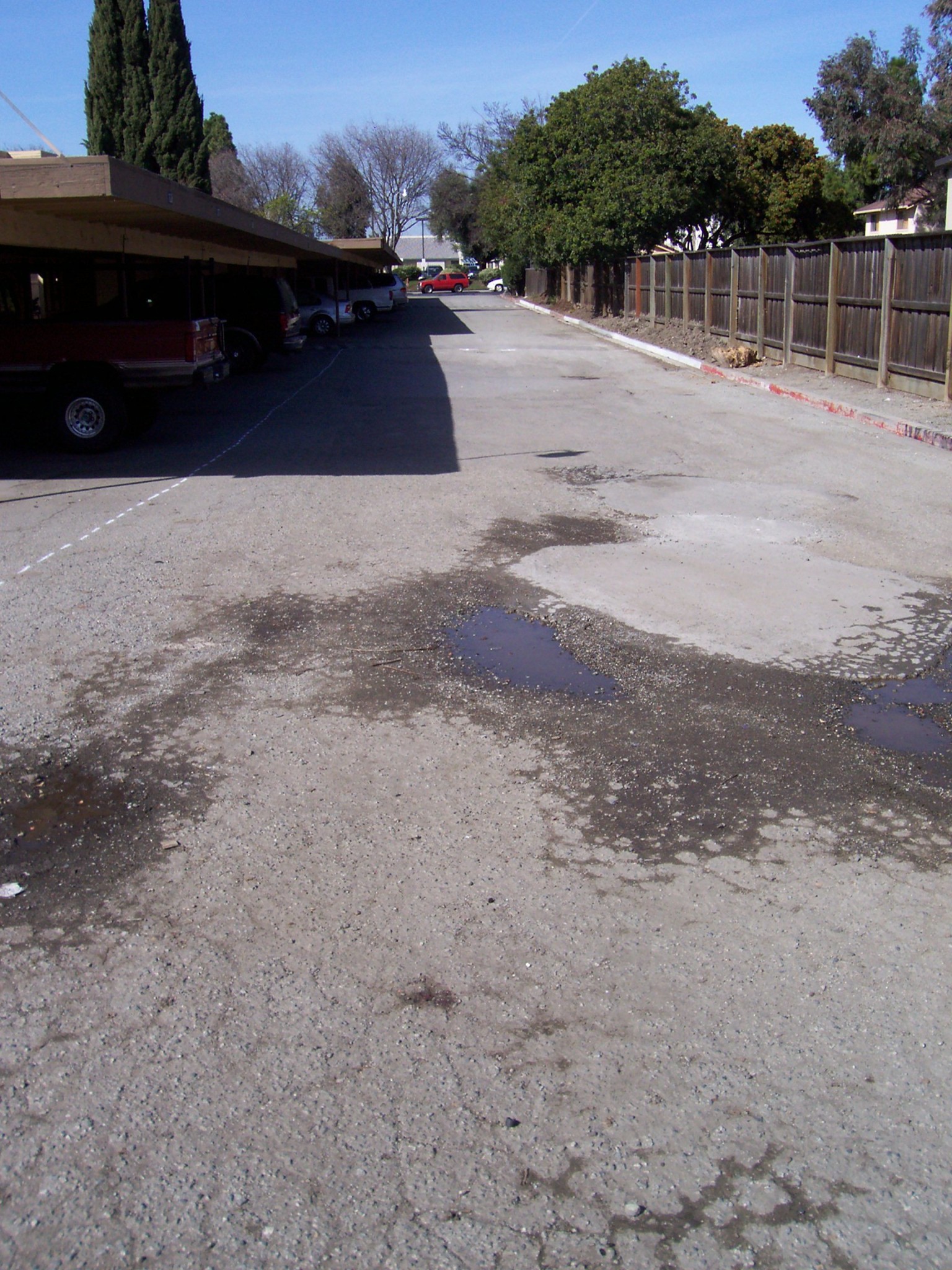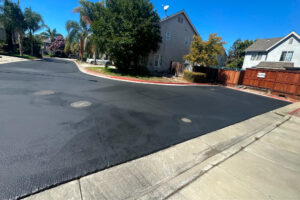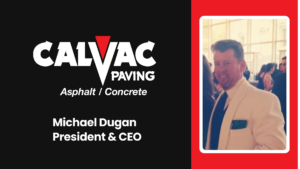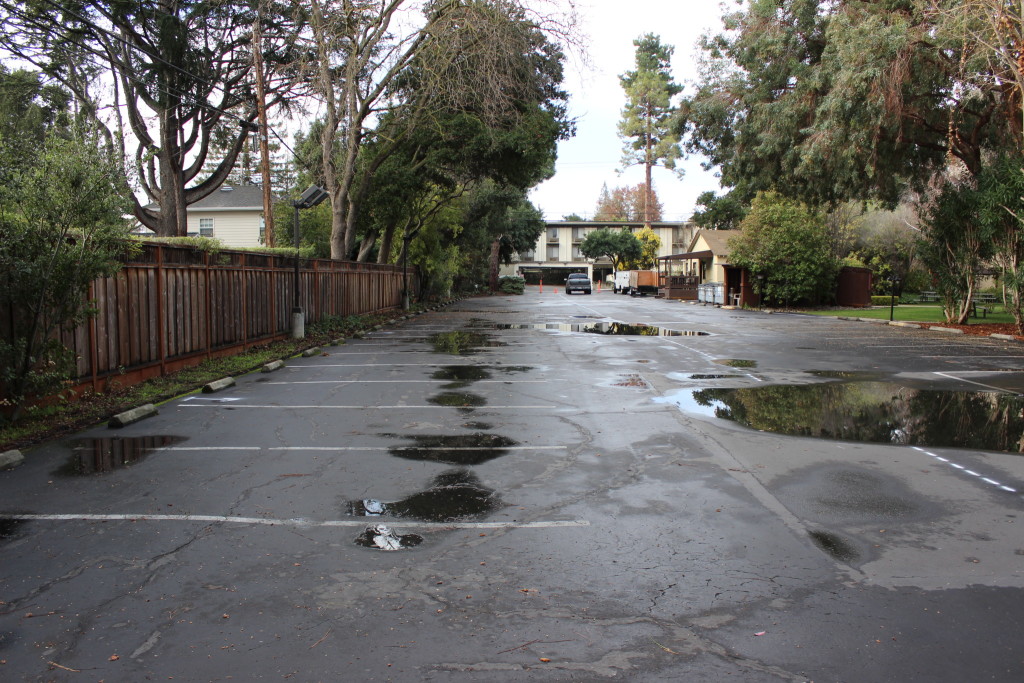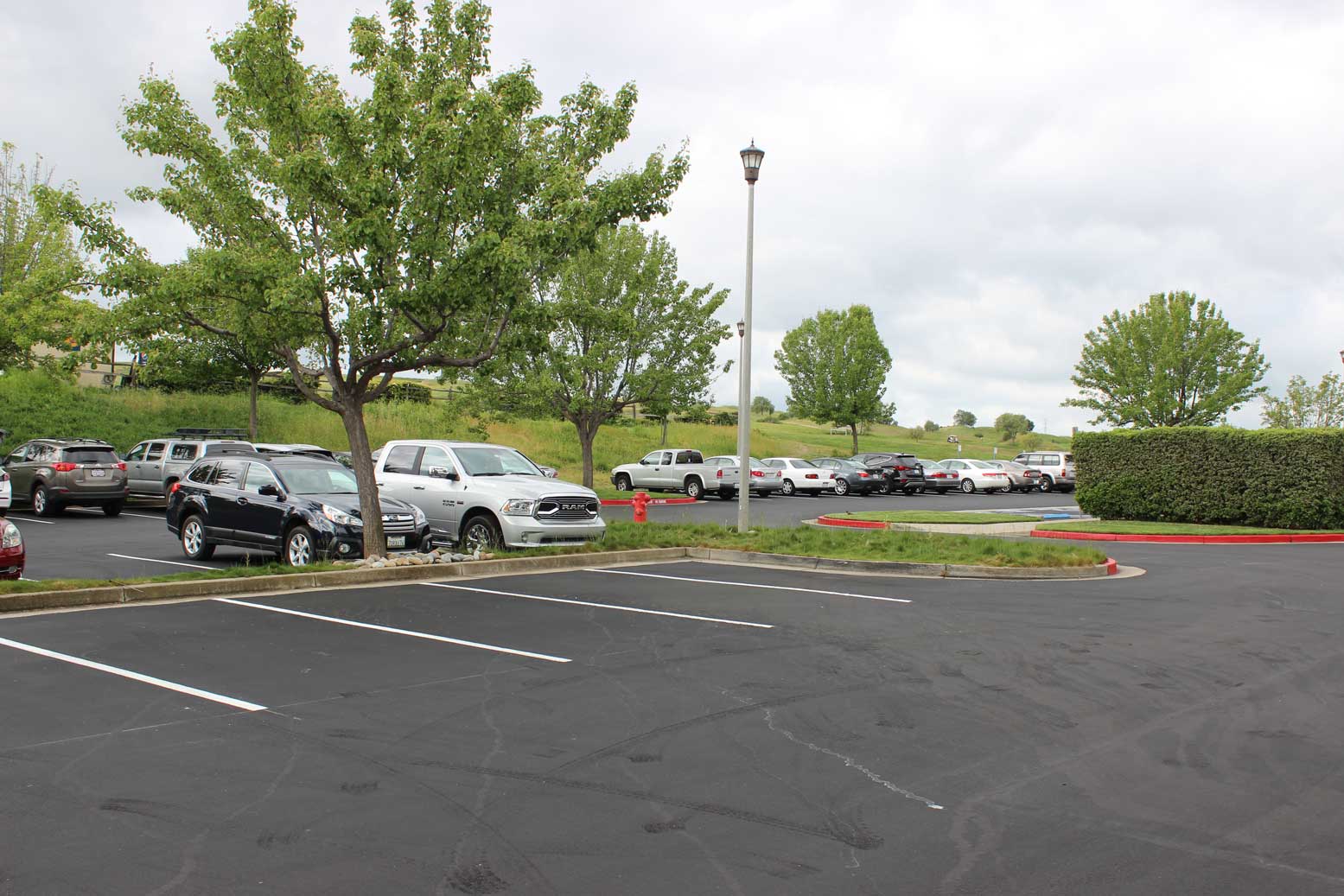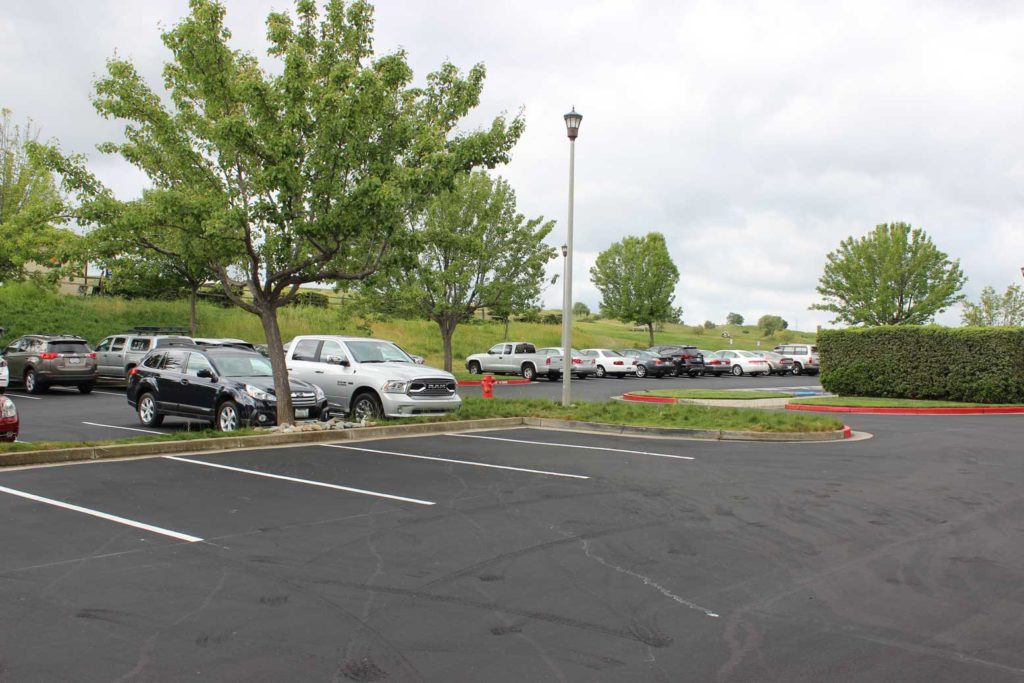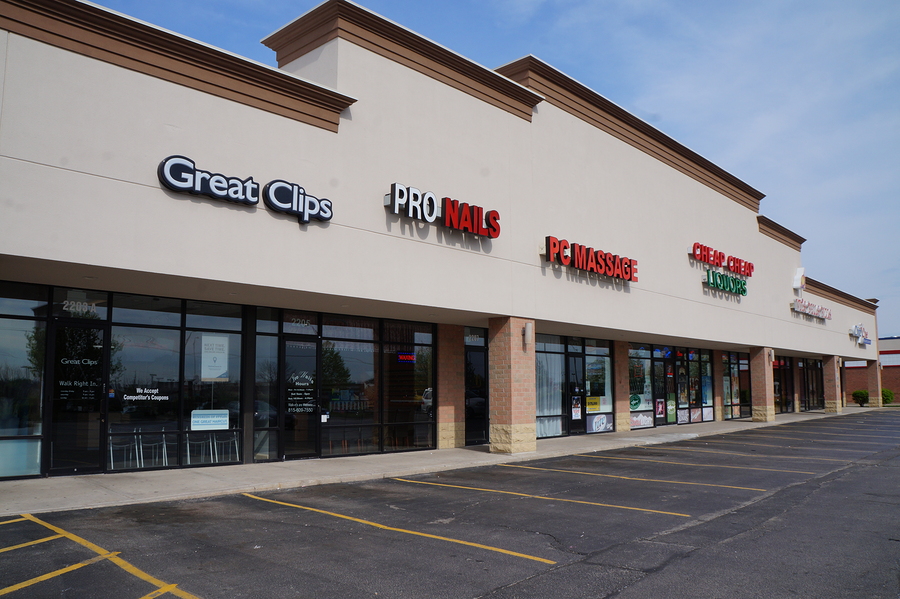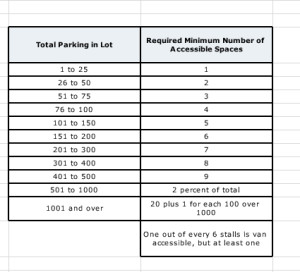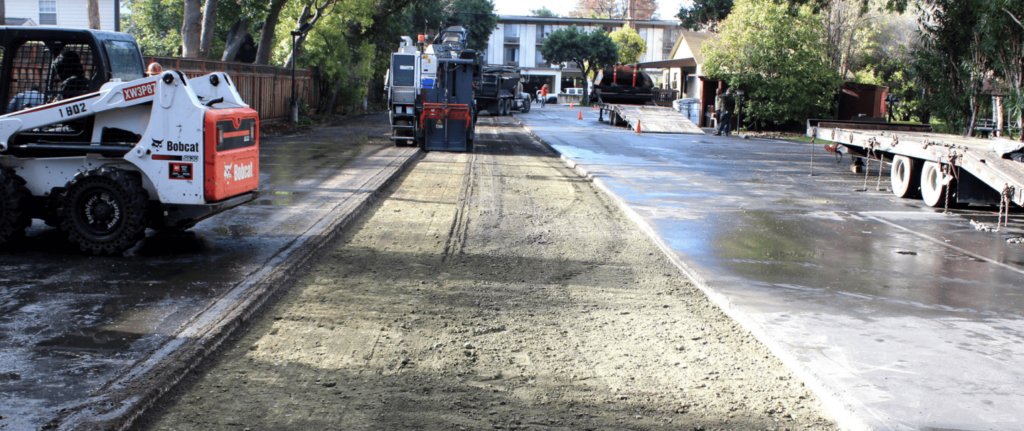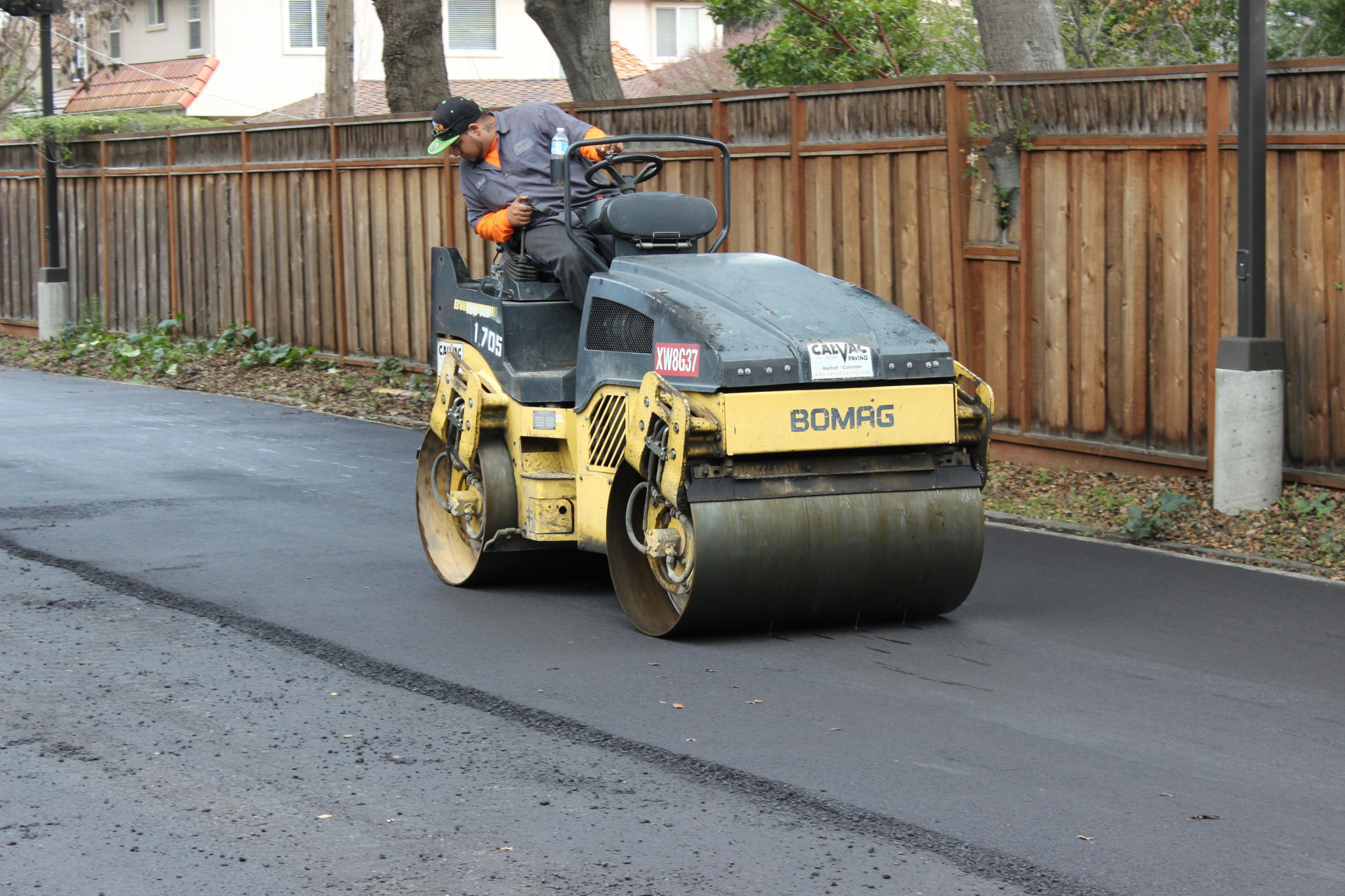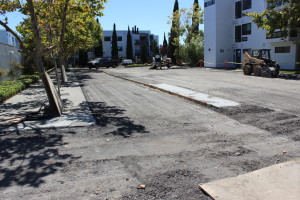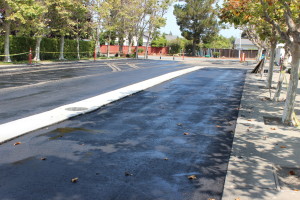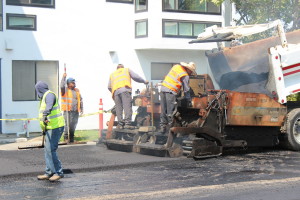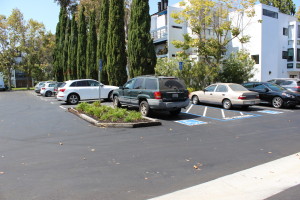
See our work on social media:
Hear from a paving expert! Fill out the form below
Parking Lot Striping: Everything You Need To Know

Why Parking Lot Striping Matters
A well-striped parking lot is more than just a nice touch—it plays a big role in keeping your property safe, organized, and looking sharp. Whether you’re managing a shopping center, office complex, or apartment building, clear striping ensures smooth traffic flow, maximizes parking space, and keeps your lot compliant with accessibility laws.
At Calvac Paving, we’ve been helping businesses in the Bay Area with high-quality parking lot striping for decades. In this guide, we’ll cover everything you need to know about parking lot striping, including paint types, best practices, costs, and maintenance tips.
What Is Parking Lot Striping?
Parking lot striping (also called pavement marking) involves painting lines and symbols on asphalt or concrete to indicate parking spaces, directional arrows, crosswalks, and other important traffic guidelines. It may also include the installation of wheel stops and safety bollards.
Professional striping companies use specialized equipment like laser-guided striping machines and reflective bead dispensers to ensure precise, long-lasting results.

Why Is Parking Lot Striping Important?
A fresh, well-marked parking lot has several key benefits:
1. Improves Safety
Clear striping reduces confusion and minimizes the risk of accidents. Well-defined parking spots and pedestrian walkways help prevent collisions between vehicles and pedestrians.
2. Maximizes Parking Space
Properly marked parking spaces ensure you’re using your lot efficiently, allowing for the maximum number of vehicles to park comfortably.
3. Enhances Curb Appeal
A clean, clearly marked parking lot gives customers and tenants a positive first impression. Faded lines can make a business look neglected, while fresh striping adds to the overall appeal of your property.
4. Ensures ADA Compliance
The Americans with Disabilities Act (ADA) requires parking lots to include designated accessible parking spaces with proper signage and dimensions. Staying compliant helps you avoid fines and ensures accessibility for all visitors.
5. Reduces Liability
Well-maintained striping helps prevent accidents, reducing the risk of potential lawsuits if someone gets injured due to unclear markings or improper signage.
Types of Paint Used for Parking Lot Striping
There are three main types of paint used for parking lot striping, each with its pros and cons:
1. Oil/Solvent-Based Paint
Pros: Highly durable, resistant to freezing temperatures, ideal for colder climates.
Cons: Takes longer to dry, contains more chemicals, and has environmental restrictions in some areas.
2. Water-Based Paint
Pros: Dries quickly (often within 15 minutes), environmentally friendly, cost-effective.
Cons: Less durable than oil-based paints, may require more frequent restriping.
3. Thermoplastic Paint
Pros: Extremely durable, long-lasting, ideal for high-traffic areas.
Cons: More expensive than other options, requires specialized application.
Choosing the right paint depends on factors like climate, budget, and expected traffic levels. At Calvac Paving, we help clients select the best option for their needs.
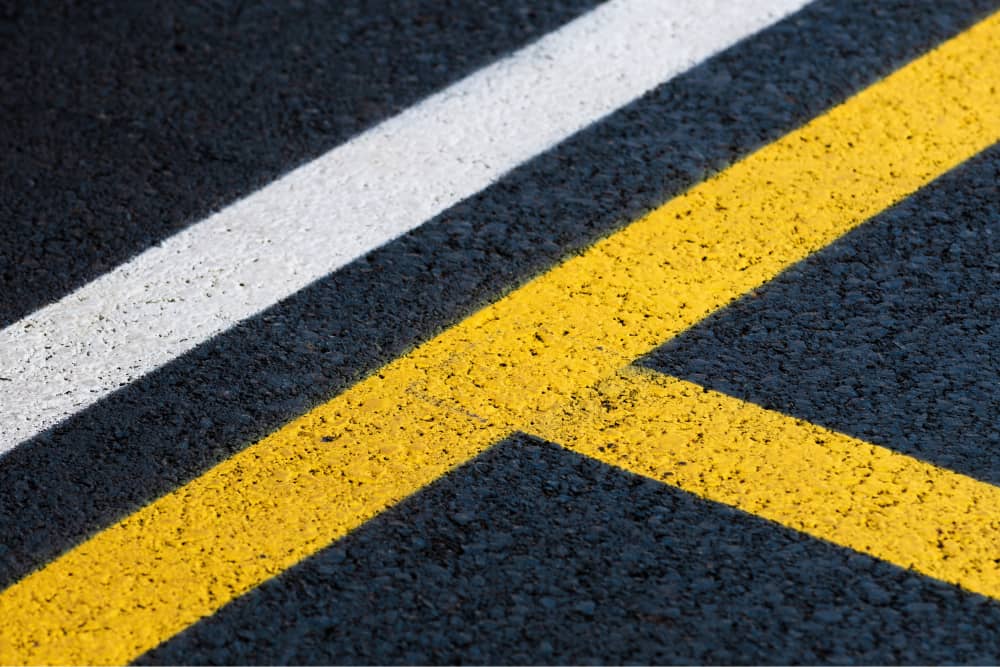
How Often Should You Restripe Your Parking Lot?
Over time, parking lot striping fades due to sun exposure, heavy traffic, and weather conditions. Here’s a general guideline on when to restripe:
Every 1-2 years for high-traffic lots.
Every 2-4 years for lower-traffic areas.
As soon as markings become difficult to see, regardless of the timeframe.
Regular maintenance keeps your parking lot safe, professional-looking, and compliant with local regulations.
What Affects the Cost of Parking Lot Striping?
Several factors impact the cost of restriping or new striping, including:
Size of the parking lot – Larger lots require more paint and labor.
Type of paint used – Oil-based, water-based, and thermoplastic have different price points.
Additional markings – Crosswalks, arrows, ADA spaces, and fire lanes add to the cost.
Existing condition of the lot – Cracked or worn pavement may require repairs before striping.
Typical costs range from $0.20 – $0.30 per linear foot for standard 4-inch lines, with extra charges for specialty markings like directional arrows and handicap symbols.
Best Practices for Parking Lot Striping
1. Plan Before You Paint
Before striping, create a layout that maximizes space while maintaining proper traffic flow and accessibility compliance.
2. Use High-Quality Paint
Investing in durable, long-lasting paint saves money in the long run by reducing the need for frequent restriping.
3. Apply Paint in Optimal Conditions
Paint adheres best when temperatures are above 50°F and there’s no rain in the forecast.
4. Maintain Your Lot Regularly
Sealcoating, cleaning, and minor repairs help prolong the life of your striping and keep your parking lot looking sharp.
FAQs About Parking Lot Striping
How long does it take for parking lot paint to dry?
Most striping paint dries within 30 minutes to an hour, but it’s best to keep traffic off freshly painted areas for a few hours.
Do I need to close my business during striping?
Not necessarily. Striping can be done in sections, during off-hours, or on weekends to minimize disruptions.
Can I paint my parking lot myself?
While DIY striping kits exist, professional striping ensures accurate measurements, durable paint application, and compliance with ADA and local regulations.
What happens if my parking lot isn’t ADA compliant?
Non-compliant parking lots may face fines or lawsuits. Ensuring your lot meets ADA guidelines protects your business and accommodates all visitors.
FAQs About Calvac Paving
How long has Calvac Paving been in business?
Calvac Paving has been serving the Bay Area for over 50 years, providing expert asphalt, concrete, and striping services.
Do you provide free estimates?
Yes! We offer free, no-obligation quotes for parking lot striping and other paving services.
What areas do you serve?
We provide asphalt and concrete services throughout San Jose and the surrounding Bay Area.
Can you handle large-scale commercial projects?
Absolutely! Our team specializes in commercial and industrial paving projects, from small parking lots to large retail centers.
Conclusion
Parking lot striping is essential for safety, efficiency, and curb appeal. Whether you need new striping or a fresh coat to brighten up faded markings, Calvac Paving has the experience and expertise to get the job done right.
Need a quote? Contact us today to schedule a free consultation and keep your parking lot in top shape!
